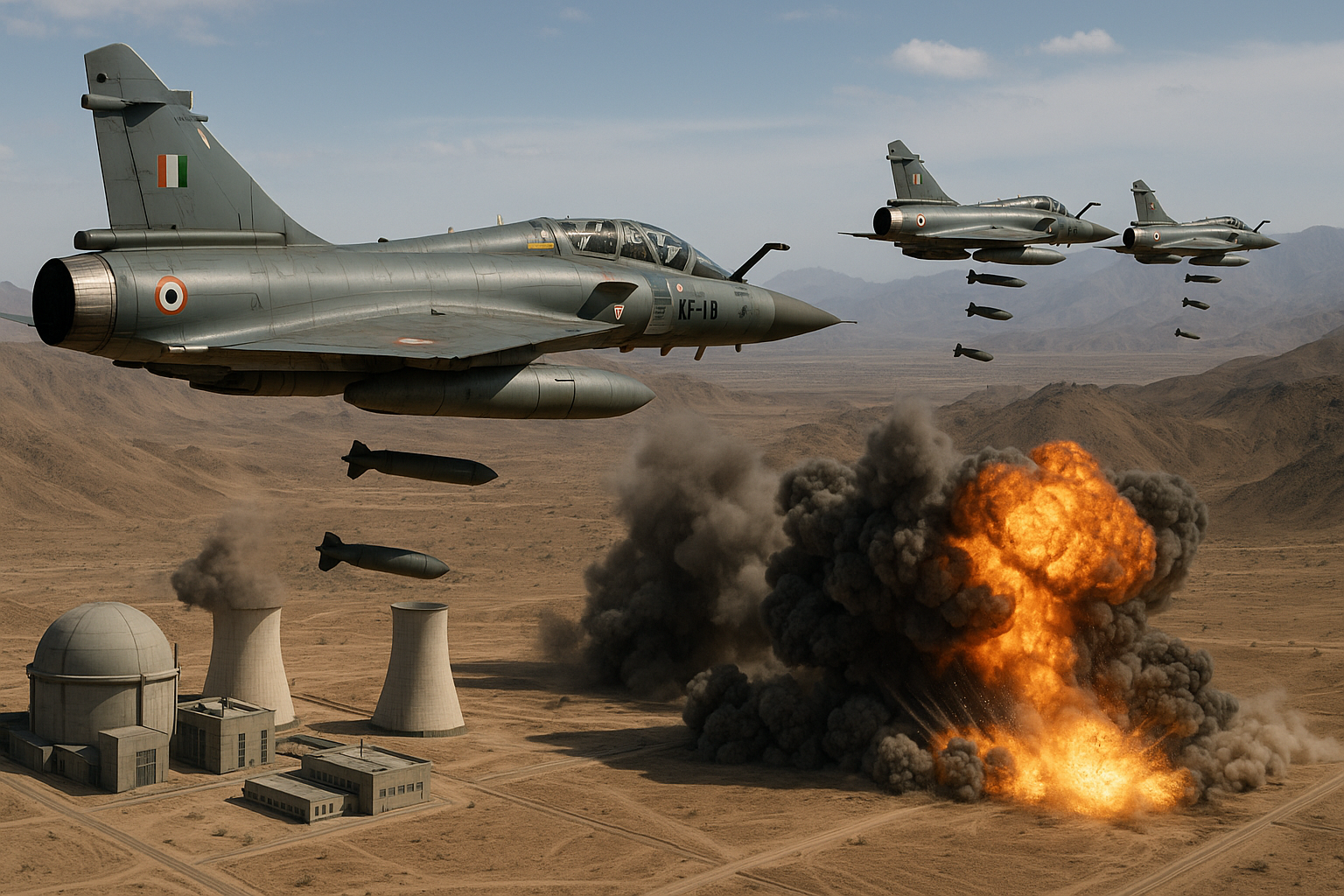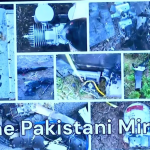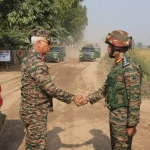In a historic and high-stakes escalation, the Indian Air Force (IAF) executed Operation Sindoor, a 72-hour coordinated missile assault targeting 11 key Pakistani air bases, becoming the first nation to strike so many military installations of a nuclear-armed adversary in one go. The strikes, carried out between May 8 and 10, followed a deadly terror attack in Pahalgam, which Indian intelligence linked to Pakistan-based terror outfits.
The offensive focused on crippling Pakistan’s air power, neutralizing UAV/drones command centers, and sending an unmistakable signal to its nuclear command infrastructure. According to satellite imagery and open-source intelligence, significant damage was inflicted on infrastructure, including runways, radar installations, fuel depots, and aircraft hangars.
The Targets: 11 Air Bases Across Pakistan
1. Nur Khan Air Base (Chaklala, near Islamabad)
Nur Khan Air Base, located adjacent to Islamabad, is one of Pakistan’s most strategically sensitive air facilities. It serves as the headquarters for Pakistan’s Air Mobility Command and houses key transport aircraft such as the C-130 Hercules and IL-78 aerial refuelers, as well as Saab 2000 Erieye Airborne Early Warning & Control (AEW&C) systems. Importantly, it lies next to the Strategic Plans Division (SPD), which oversees the country’s nuclear arsenal, making it a symbolic and high-value target. Its infrastructure supports VIP movement, strategic logistics, and aerial surveillance operations. The severe damage it reportedly sustained in the strikes sends a calculated signal, challenging Pakistan’s nuclear command-and-control ecosystem.
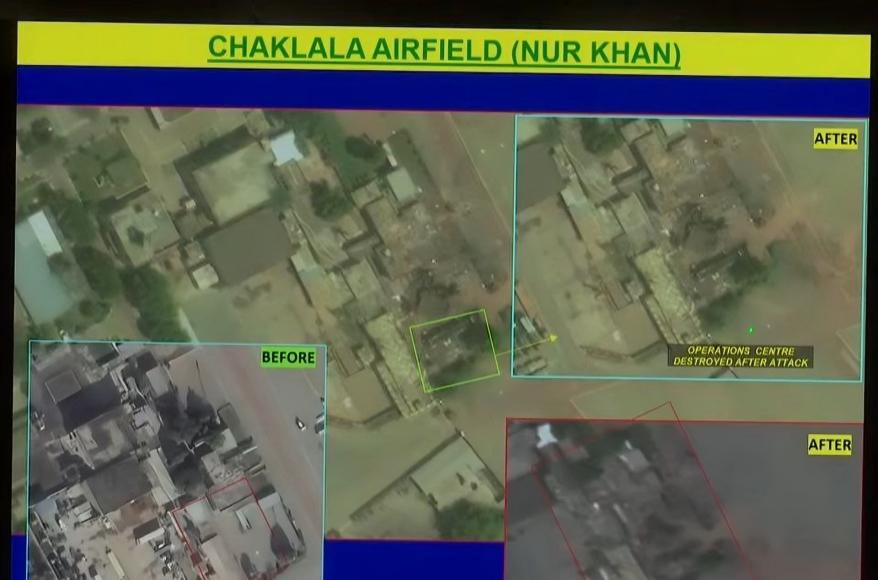
2. PAF Base Rafiqui (Shorkot, Punjab)
PAF Base Rafiqui, located in Shorkot, Punjab, is one of Pakistan’s principal fighter bases, featuring a 10,000-foot runway and a parallel taxiway that allows for continuous combat operations. It is a vital node in Pakistan’s central air defense grid and houses multiple frontline squadrons, including JF-17 Thunder and Mirage aircraft. Rafiqui also functions as a strategic reserve base in case of northern base congestion or degradation. Its central location provides flexibility for rapid deployment to eastern and southern fronts, making it a highly functional and frequently active base in PAF’s operational planning.
No official images were displayed at the briefing but Air Marshal AK Bharti mentioned the name of the base verbally.
3. PAF Base Murid (Chakwal, Punjab)
PAF Base Murid has rapidly evolved into a critical hub for Pakistan’s drone warfare capabilities. Situated close to the Indian border in Punjab’s Chakwal district, it houses Turkish-supplied Bayraktar TB2 and Akinci unmanned aerial vehicles (UAVs), and is believed to play a major role in reconnaissance, target acquisition, and precision strikes. It has infrastructure designed for rapid launch and recovery of drones, as well as satellite communication and control centers. The base also integrates with Pakistan’s expanding digital warfare capabilities and is key to its asymmetric strategy involving drones near the LoC and border regions.
No official images were displayed at the briefing but Air Marshal AK Bharti mentioned the name of the base verbally.
4. Sukkur Air Base (Sindh)
Sukkur Air Base is located in the Sindh province and serves as a vital logistics and regional defense outpost. While not as heavily armed as frontline fighter bases, its role is critical in sustaining operations across southern Pakistan. The base has infrastructure to support transport aircraft and limited fighter operations, making it essential for tactical airlift, humanitarian missions, and reinforcement of forward air elements. Given its position between Karachi and the India-Pakistan border, it acts as a buffer for rapid military mobilization and southern air corridor protection.
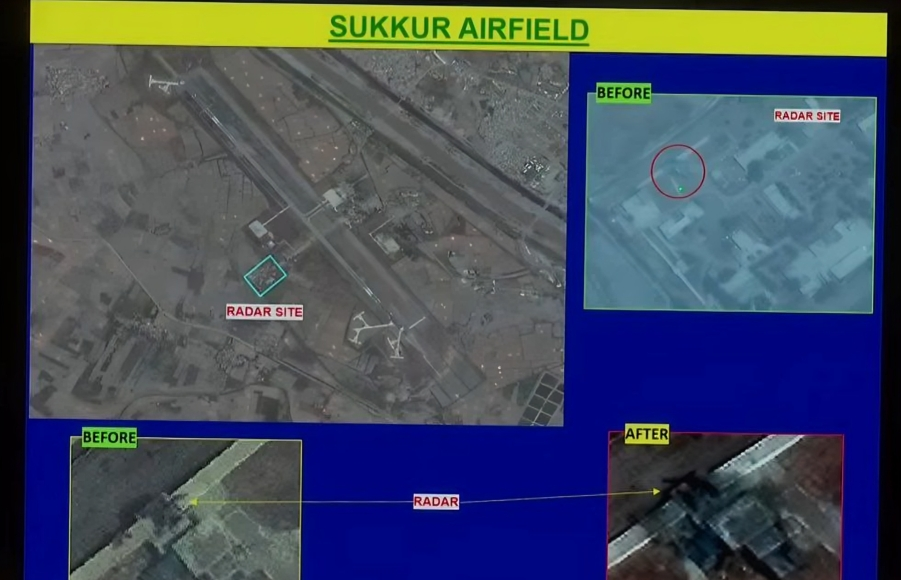
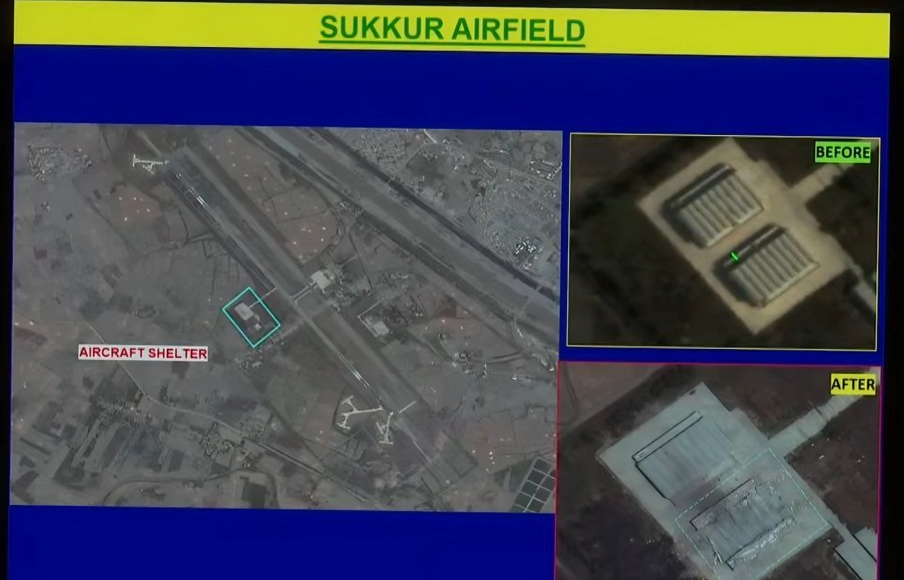
5. Rahim Yar Khan Air Base (Punjab)
Rahim Yar Khan is a strategic forward-operating airstrip located near southern Punjab. Though traditionally a satellite facility, it has seen expansion in recent years to support drone operations and serve as a contingency dispersal site for aircraft in high-threat scenarios. Its location allows access to both eastern and southern theaters rapidly.
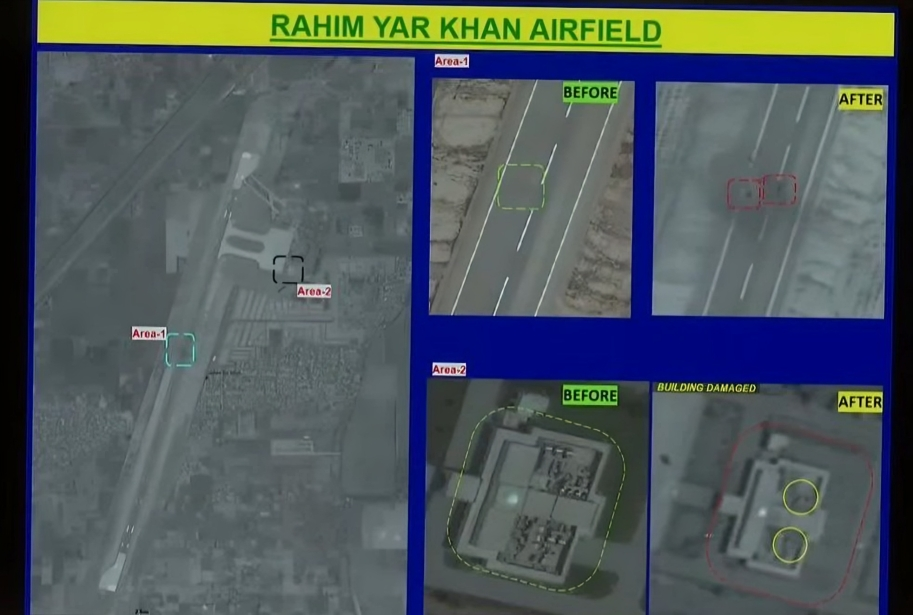
6. Pasrur Air Base (Punjab)
Pasrur Air Base, situated near the LoC, functions primarily as a staging ground for drone operations and surveillance missions. It is believed to support mid-range drones and reconnaissance aircraft tasked with monitoring Indian troop movements and infrastructure. Though relatively low-profile, its utility lies in enabling unmanned surveillance operations, acting as a crucial node in Pakistan’s electronic intelligence and real-time situational awareness infrastructure near its eastern border.
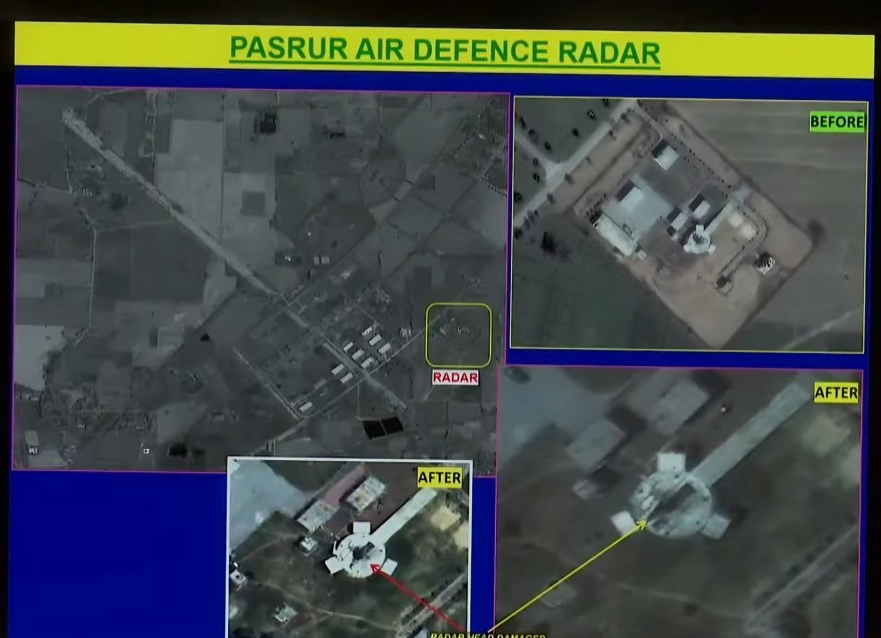
7. Chunian Air Base (Punjab)
Chunian serves as another emerging hub in Pakistan’s growing unmanned aerial systems (UAS) strategy. Located deeper in Punjab, it is designed to support forward logistics and drone operations. With hangars and launch pads adapted for rapid drone deployment, the base plays a support role in staging offensive or defensive drone missions. It complements the operations from Murid and Pasrur, enabling simultaneous UAV activities across different border sectors. Its strategic relevance has increased with Pakistan’s reliance on Turkish and Chinese drones for real-time battlefield intelligence.
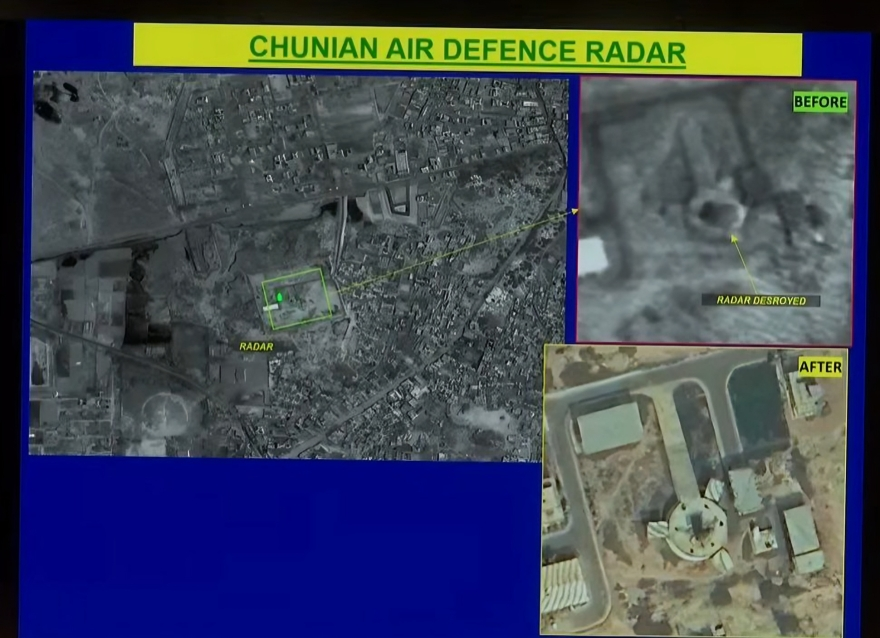
8. PAF Base Mushaf (Sargodha, Punjab)
Mushaf Air Base in Sargodha is one of the most critical airbases in Pakistan. It hosts the Combat Commanders School (CCS), Pakistan’s equivalent to India’s Tactics and Air Combat Development Establishment (TACDE), and trains elite fighter pilots. It houses squadrons of F-16s, JF-17 Thunders, and Mirage III/5 aircraft. It is a headquarters for Central Air Command and frequently hosts joint exercises and drills. With hardened shelters and multiple runways, Mushaf is central to both peacetime air dominance and wartime resilience.
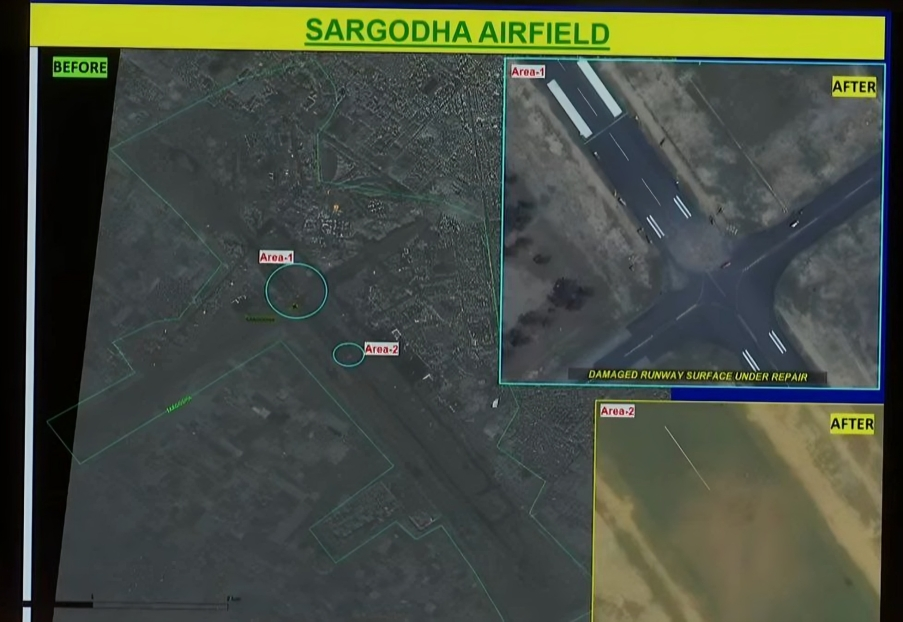
9. Arifwala Air Base (Punjab)
Arifwala serves as a low-profile but operationally valuable airstrip used for auxiliary drone deployments and forward logistics. It is believed to host small UAV units and mobile radar assets, enabling decentralized surveillance and real-time battlefield awareness. Its increasing utility reflects Pakistan’s attempt to diversify its drone operating bases away from more predictable locations.
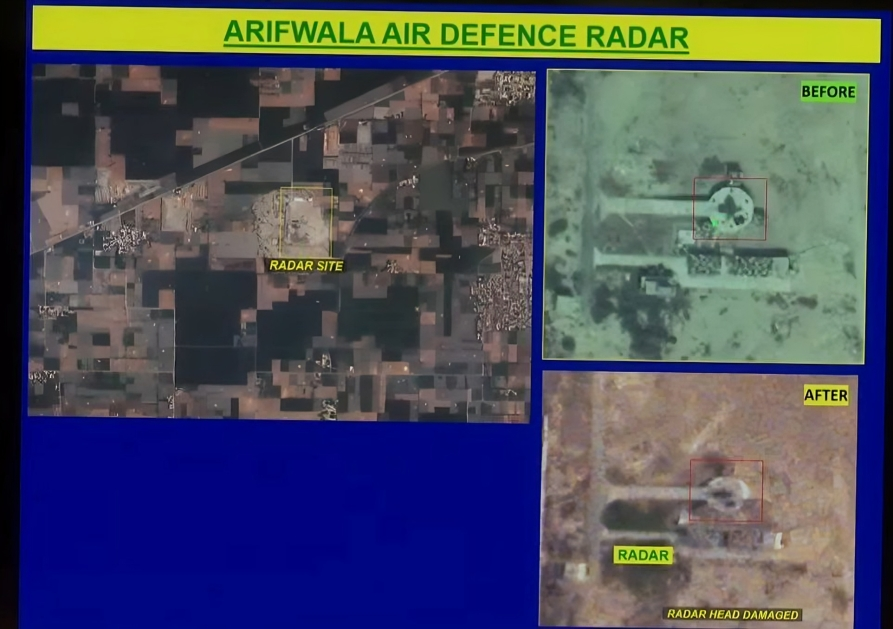
10. Bholari Air Base (Sindh)
Bholari is one of Pakistan’s newest and most modern air bases, located near Hyderabad in Sindh. Commissioned in 2018, it was built to host JF-17 squadrons and support future multi-role aircraft. The base was strategically planned to cover southern Pakistan’s aerial defense and offer redundancy for operations in case other bases like Masroor or Shahbaz are compromised. Bholari enhances Pakistan’s air combat readiness in the southern theater and supports integrated air defense through modern radar, electronic warfare suites, and secure communications.
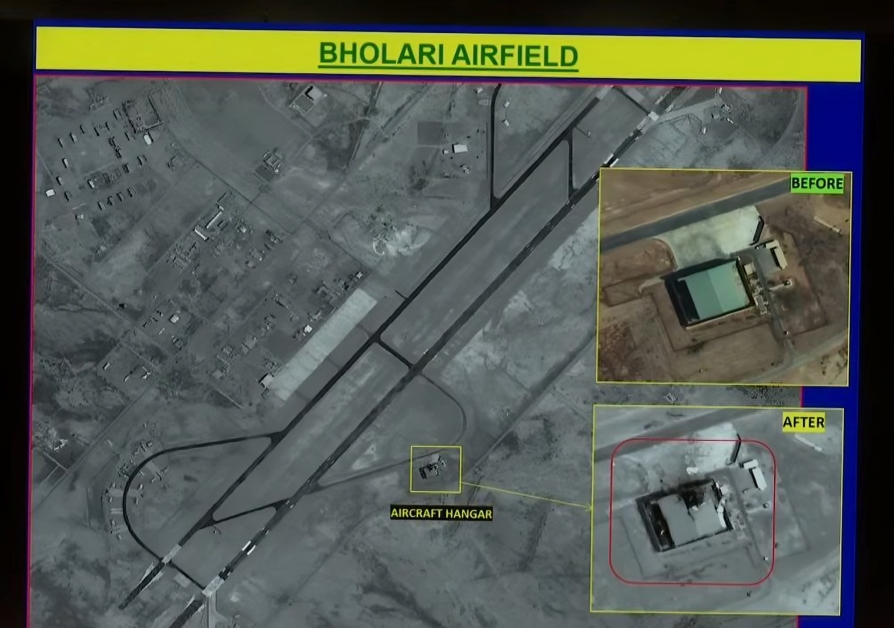
11. Jacobabad Air Base (Sindh)
Jacobabad Air Base lies in the southwestern part of Pakistan and serves as a crucial forward deployment facility. It has long been used for regional military coordination, joint exercises with international partners, and as a logistics hub. Its role has expanded to include support for drone operations and forward air controllers in desert and semi-mountainous terrain. Given its proximity to Balochistan and Afghanistan, it is also key for counter-insurgency operations and maintaining Pakistan’s air presence in its restive western regions.
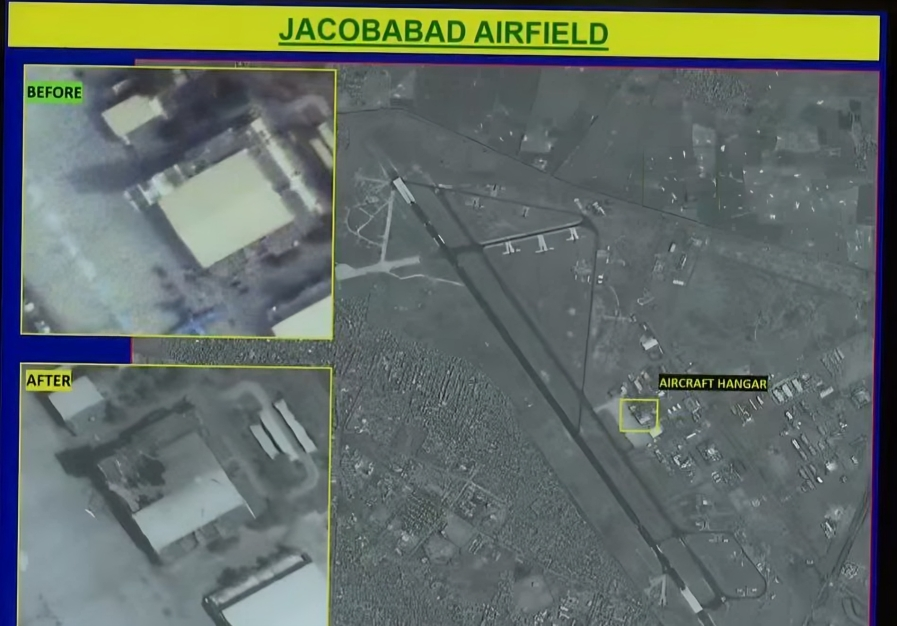
Here’s the updated table with Sialkot and Skardu replaced by Rahim Yar Khan and Arifwala in clean, formatted table form:
| Air Base | Location | Role & Importance |
|---|---|---|
| Nur Khan (Chaklala) | Near Islamabad | Air Mobility HQ; adjacent to Pakistan’s nuclear command (SPD). Severely hit. |
| Rafiqui (Shorkot) | Punjab | Fighter base with 10,000-ft runway; vital for central air defense. |
| Murid (Chakwal) | Punjab | Hub for drone warfare (Bayraktar TB2, Akinci); close to Indian border. |
| Sukkur | Sindh | Tactical base guarding south Pakistan; logistics and regional defense. |
| Rahim Yar Khan | Punjab | Forward-operating site; supports drone operations and rapid deployment. |
| Pasrur | Punjab | Drone operations and surveillance staging; located near LOC. |
| Chunian | Punjab | UAV hub for forward logistics; key in rapid drone deployment. |
| Sargodha (Mushaf) | Punjab | PAF’s elite training base; hosts F-16s, JF-17s, Mirage squadrons. |
| Arifwala | Punjab | Auxiliary drone base; supports mobile radar and surveillance units. |
| Bholari | Sindh | Modern JF-17 base; strengthens air defense in southern corridor. |
| Jacobabad | Sindh | Forward deployment & logistics base; supports southwestern theatre. |
Strike Execution and Arsenal
The IAF employed a precision strike doctrine, deploying BrahMos supersonic cruise missiles, French-origin SCALP and HAMMER munitions, and long-range loitering drones. Most strikes occurred at night to reduce civilian risk, and were reportedly coordinated with real-time satellite data, cyber jamming, and aerial surveillance.
Defense analysts say the damage at Nur Khan, Murid, and Rafiqui was particularly severe, with imagery revealing destroyed radar systems, burned aircraft, and collapsed infrastructure. The targeting of Nur Khan, within range of Pakistan’s Strategic Plans Division, is being interpreted as a deliberate message to Islamabad’s nuclear command structure.
Global Fallout: Diplomacy, Deterrence, and Dialogue
International reaction has been swift and uneasy. The United States, China, and Russia issued statements urging de-escalation. The UN Security Council convened an emergency session on May 11. A hotline conversation between the DGMOs of both nations led to a temporary stand-down, although ceasefire violations continue intermittently along the Line of Control.
According to Indian officials, no civilian areas were targeted, and the action was a “measured, proportionate, and necessary response to state-sponsored terrorism.” Pakistan’s response remains limited, with official acknowledgment of some strikes and damage, but few details.
Strategic Implications
This strike package showcases India’s technological and doctrinal shift—from deterrence to pre-emptive conventional dominance. Experts call it a “turning point in subcontinental conflict logic”, noting how India risked escalation to challenge Pakistan’s doctrine of nuclear ambiguity.
By deliberately targeting nuclear-adjacent and drone-operational airbases, India may have redefined regional red lines and opened debate on how future asymmetric provocations may be handled—even under the shadow of nuclear deterrence.
Conclusion
Operation Sindoor is not just a military operation—it’s a statement of resolve. It has redefined the way South Asia’s air defense, counter-terrorism response, and strategic calculus will be analyzed by policymakers, military planners, and global powers for years to come.

